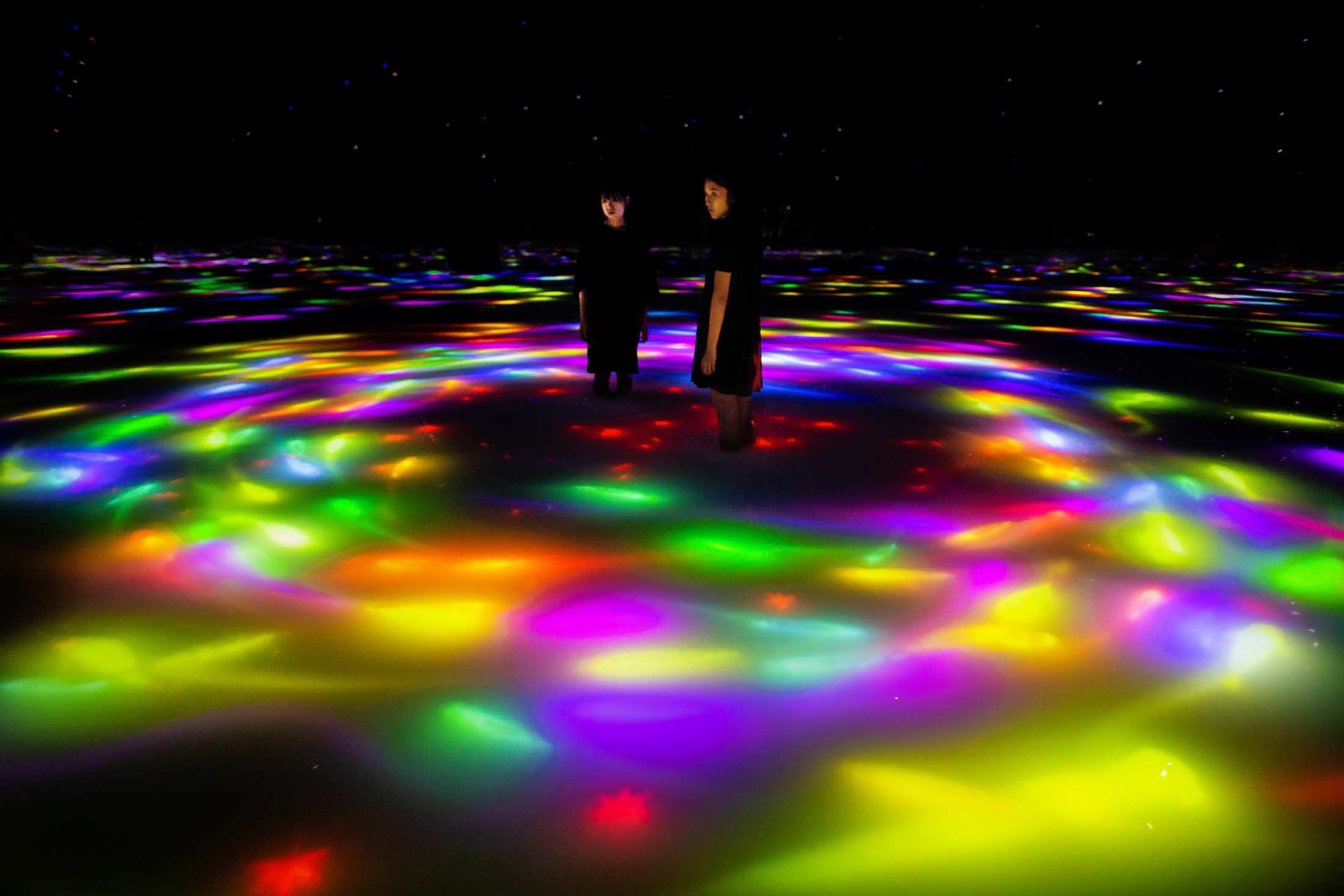When I think of most museums, I think of paintings by old masters hanging behind glass or barricades, with hawk-eyed guards quick to reprimand should you dare get too close.
There’s an air of silent reverence; you can only get this close. There’s the art, and there’s you, the audience. Steps apart.
But the digital art experience that teamLab Planets Tokyo offers in the Toyosu district of Tokyo is something entirely different. Here, we are not merely observers; through our interaction with the art, we become an intrinsic part of it.
As I enter this museum—founded by a collective of interdisciplinary creative professionals, including artists, programmers, designers, engineers, CG animators, and even mathematicians—I’m instructed to remove my shoes and socks, which I’m to store along with my bags in a locker. Already, I get the sense that something is afoot.
The sound of rushing water greets me in the darkness as I enter, my eyes adjusting as my bare feet embrace the warmth of the rushing water. My senses are on high alert. What am I getting myself into?
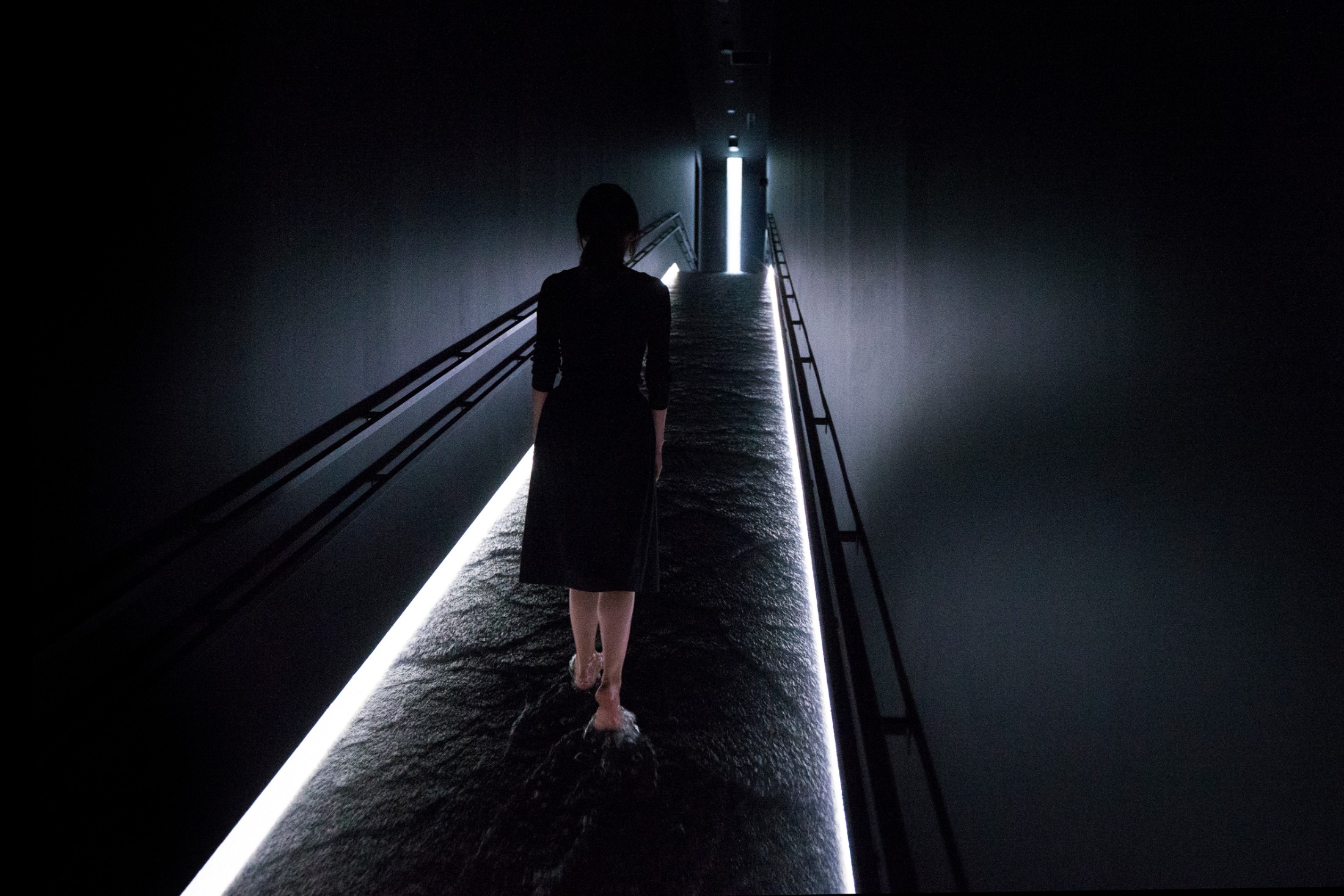
teamLab, Waterfall of Light Particles at the Top of an Incline, 2018, Digital Installation © teamLab
The cascading sounds grow louder as I approach the first exhibit: “Waterfall of Light Particles at the Top of an Incline.” Each illuminated droplet glows in the dark, leaving a trail of light.
Leaving the waterfall of light, I towel off and walk into a dark space, where my feet instantly sink beneath me. The entire floor is a giant beanbag chair, but it might as well be a black hole. I struggle to make my way across then give in and, like several other visitors, find a corner to take a short nap.
The artwork here is designed to immerse our entire body, dissolving boundaries between ourselves, other visitors, and the works of art themselves.
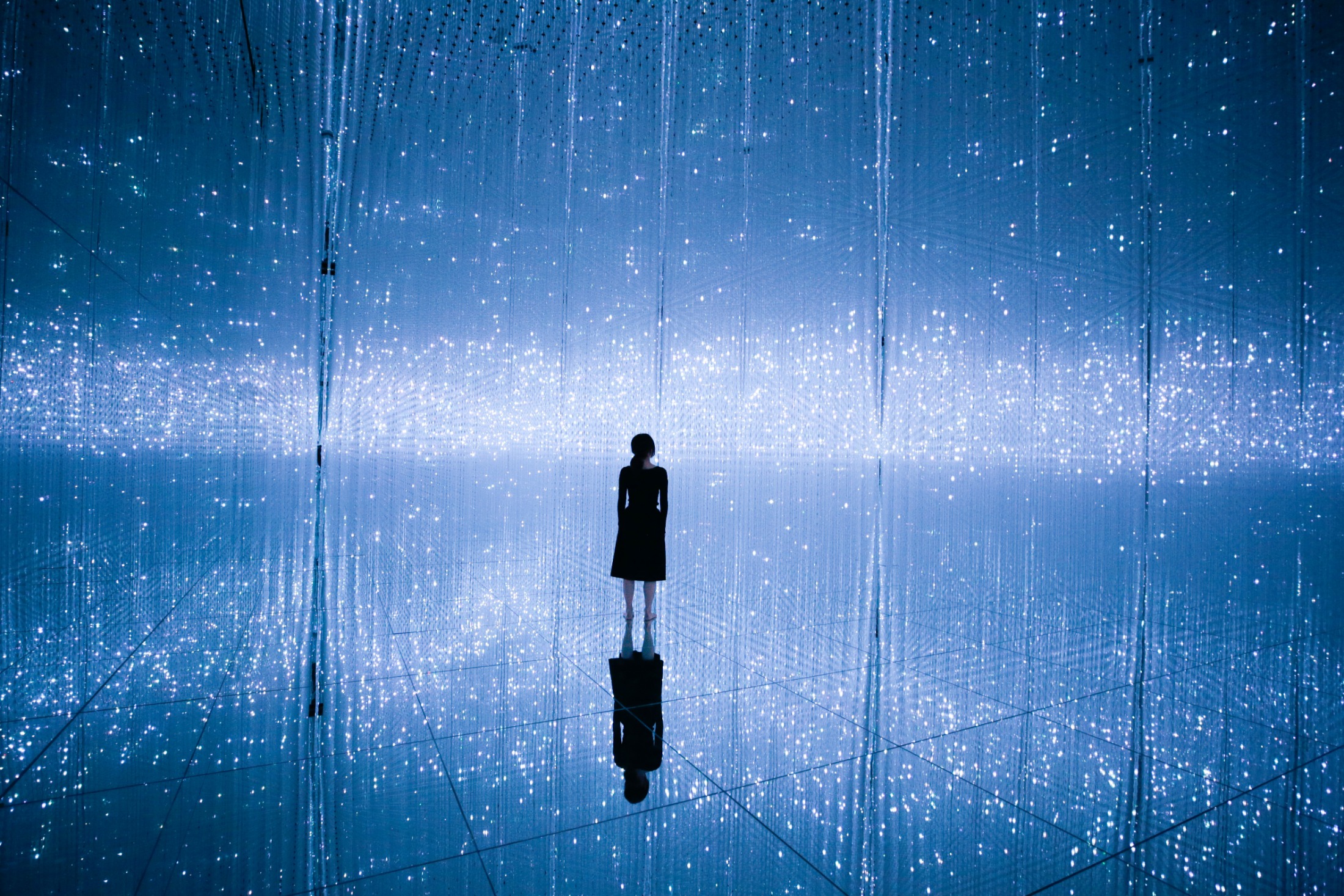
teamLab, The Infinite Crystal Universe, 2018, Interactive Installation of Light Sculpture, LED, Endless, Sound: teamLab © teamLab
Eventually, I crawl out of the room and find myself blinded by thousands of LED strands hanging from the ceiling. This is “The Infinite Crystal Universe.” The mirrored walls, floor, and ceiling amplify the effect, creating a sense of endless light and sparkle. The lights pulse and move. The colours change and shift. You’re never standing in the same room long. Visitors can even use their smartphones to interact with the elements, becoming an active part of the art’s ever-changing creation.
As I make my way into the next room, I once again find myself immersed in water, this time up to my knees. Thousands of colourful digital koi swim all around me. I follow a particular koi but accidentally collide with it—turning it into a flower that scatters around the space.
Giant spheres of light fill the following mirrored space, reducing us all to giggles as they change hues as we play with the bouncing orbs.
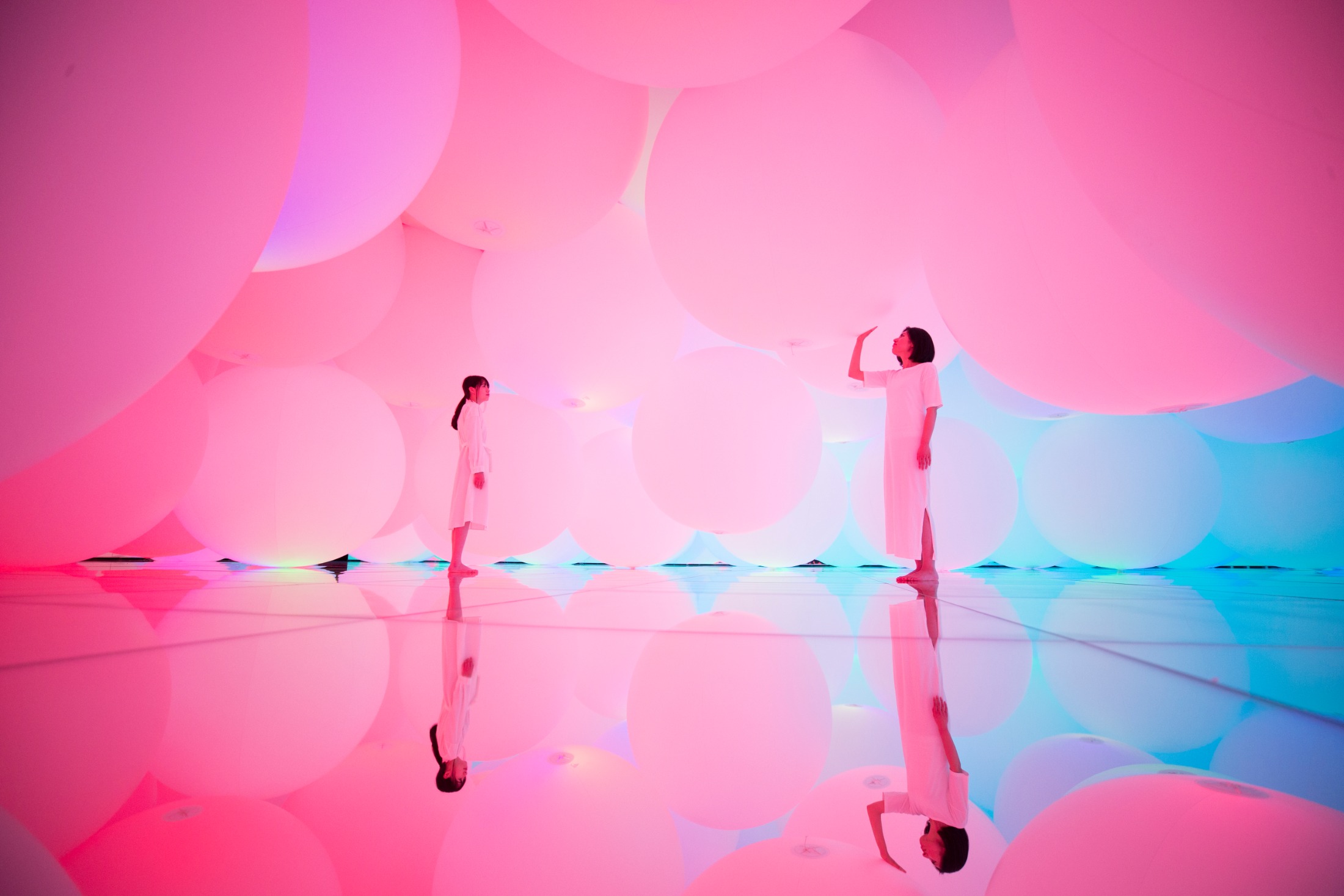
teamLab, Expanding Three-Dimensional Existence in Transforming Space – Flattening 3 Colors and 9 Blurred Colors, Free Floating, 2018, Interactive Installation, Endless, Sound: Hideaki Takahashi © teamLab
As I finally (and reluctantly) make my way to the final room, I realize it’s best experienced lying down. Huge and vivid digital flowers float and fall from above in a circle of birth and death, rendered in real time by a computer. And once again, visitors can influence this ever-changing artwork using their smartphones, so no one experience is ever the same.
As the flowers bloom and wither away, I think to myself: I could stay here forever. This is the place where art, imagination, and connection melt together, redefining the idea of an art museum forever.
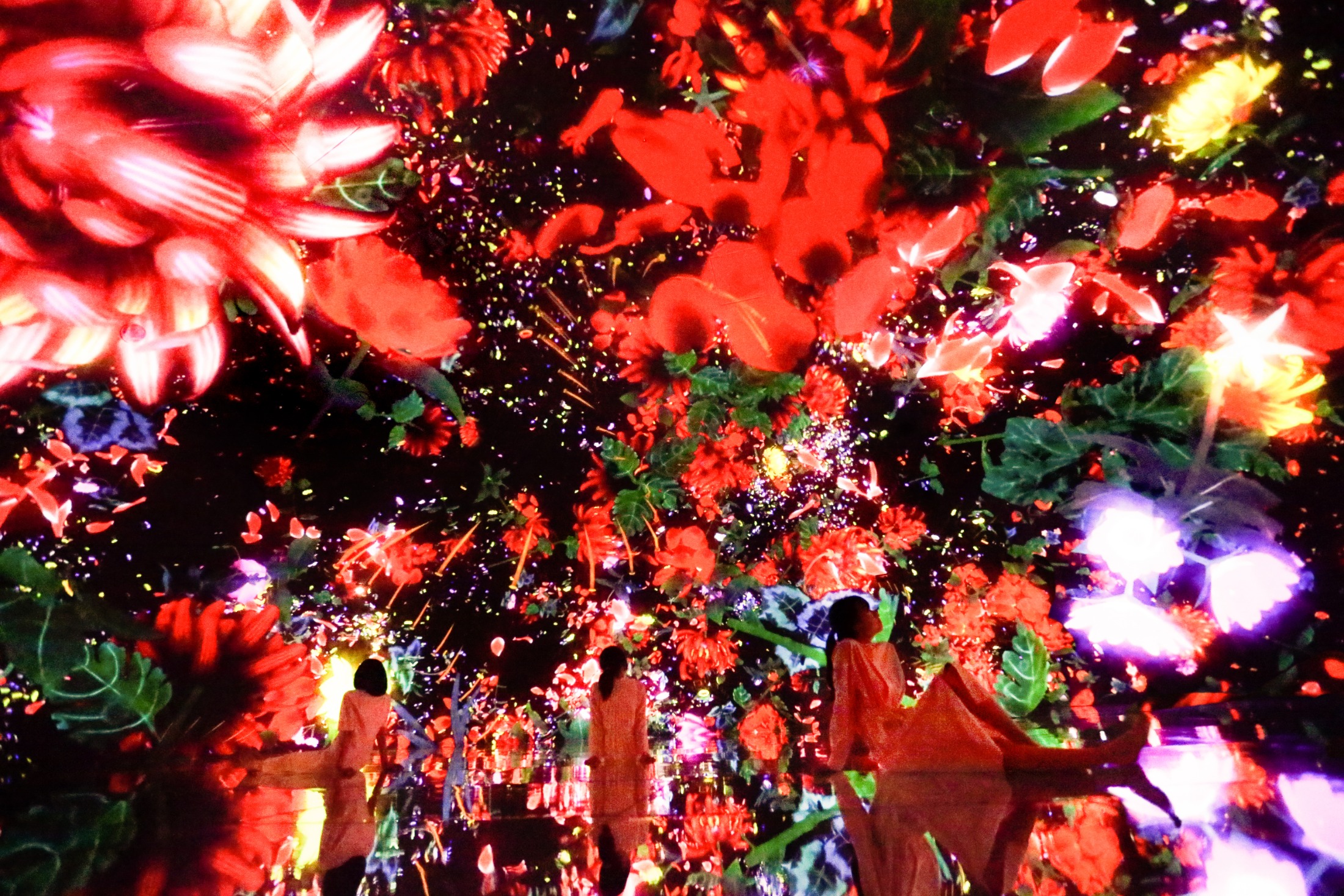
teamLab, Floating in the Falling Universe of Flowers, 2016-2018, Interactive Digital Installation, Endless, Sound: Hideaki Takahashi © teamLab
teamLab Planets TOKYO runs until fall 2020 in the Toyosu district of Tokyo. Another teamLab museum, Borderless, is open permanently in Tokyo’s Odaiba district. teamLab is represented by Pace Gallery.
Read more from our Arts section.

